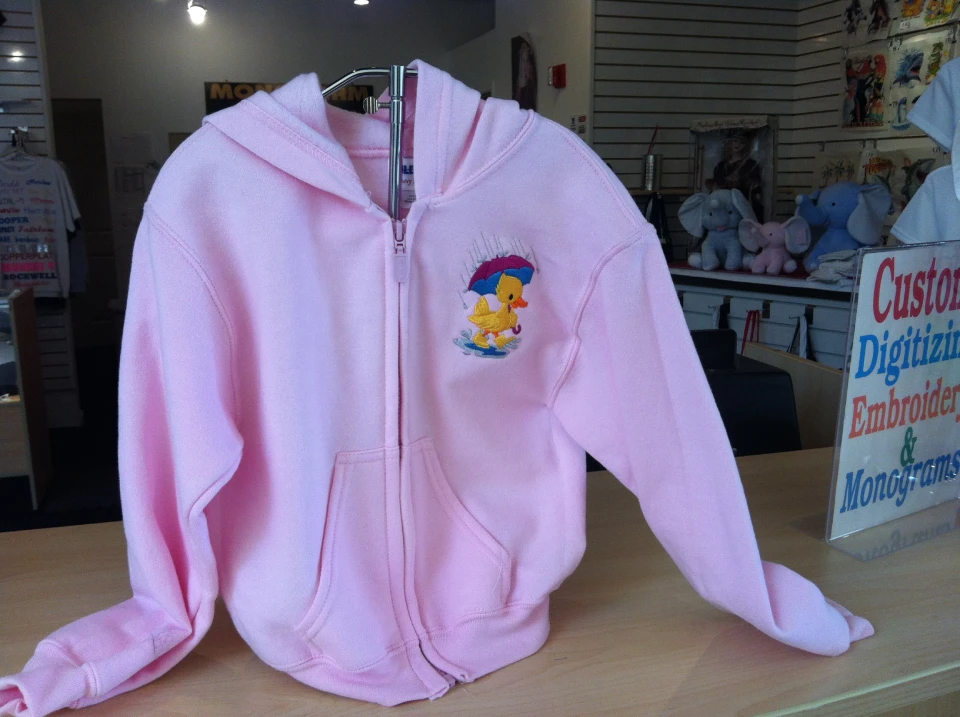Personalized School Uniforms with High-Quality Embroidery Providers
Personalized School Uniforms with High-Quality Embroidery Providers
Blog Article
The Art of Custom-made Needlework: Opening the Keys to Creating Unique and Memorable Designs
The tricks to producing custom needlework styles that mesmerize the eye and leave an enduring impression lie in a fragile balance of strategy, creative thinking, and interest to detail. As we dive into the world of personalized embroidery, we uncover the nuanced interaction between string choice, stitch intricacy, and design customization that elevates a plain garment to a work of art.
Picking the Right Embroidery Threads
When choosing needlework threads, what crucial aspects should you think about to make sure the ideal outcomes for your customized layouts? The option of embroidery thread is vital in determining the last end result of your embroidered design.
Moreover, the weight or thickness of the string plays a substantial role in the appearance of the embroidery. Thicker threads can include measurement and structure to your design, while finer strings are ideal for elaborate details and small message. In addition, taking into consideration the shade fastness and washability of the thread is essential to ensure that your custom layouts preserve their high quality and vibrancy in time. By carefully evaluating these variables and choosing top quality strings that satisfy your particular needs, you can improve the visual allure and durability of your embroidered developments.
Exploring Various Stitch Techniques
To look into the world of 'Discovering Different Stitch Methods', one must comprehend the intricacies and nuances that each sewing method gives the art of needlework. Different stitch methods not just include visual passion yet likewise contribute to the total texture and measurement of the layout. One popular stitch method is the satin stitch, which entails closely packed parallel stitches to develop a smooth and glossy surface, suitable for completing forms and creating bold details.
On the various other hand, the backstitch is a versatile technique commonly made use of for describing and including great information. It entails sewing backward to create a solid line of embroidery. Furthermore, the French knot stitch adds a responsive aspect to layouts, excellent for producing textured accents like flower centers or decorative touches.
Exploring different stitch techniques allows embroiderers to play with light, shadow, and depth within their designs, elevating the visual charm and imaginative top quality of their needlework tasks. By understanding numerous sewing techniques, one can open limitless possibilities for producing special and unforgettable custom-made needlework pieces.
Incorporating Personalized Design Elements
Having discovered the ins and outs of different stitch strategies such as the satin stitch, backstitch, and French knot, the focus currently moves towards integrating individualized layout aspects in custom embroidery tasks. Customized design aspects play a critical role in making needlework projects truly one-of-a-kind and remarkable.
One more means to incorporate tailored style components is by including signs or concepts that hold unique meaning to the recipient or show their passions and personality. Integrating a favored flower, animal, or hobby-related sign can make the needlework design much more significant and tailored. Additionally, selecting shades that reverberate with the recipient or straighten with the intended style can further enhance the personalization of the embroidery project.
Grasping the Art of Color Sychronisation

One secret facet of color sychronisation is recognizing shade theory. This includes recognizing how different shades connect with each other, the feelings they convey, and how they can be integrated to produce aesthetically enticing designs. By using shade concept principles, embroiderers can produce harmonious shade schemes that enhance the total look of the style.
In addition, paying focus to contrast is vital in shade coordination. Utilizing contrasting colors can help particular elements of the layout pop, boost legibility, and produce a visually dynamic embroidery piece. By grasping the art of Full Report shade sychronisation, embroiderers can raise their layouts and develop unforgettable items that reverberate with customers and visitors alike.
Enhancing Appearance With Advanced Needlework Stitches
French knots, as an example, are excellent for adding small, elevated dots to your design, imitating the look of beads or creating a textured surface area. Bullion knots, on the various other hand, can be used to develop twisted, ropelike elements that add an elegant feeling to the needlework. Seed sewing involves tiny, scattered stitches that can complete locations with a polychromatic appearance, while turkey job develops cosy, dimensional accents similar to animal fur or vegetation. Experimenting with these innovative needlework stitches enables you to push the boundaries of traditional needlework and produce really distinct and visually enticing appearances in your styles.
Conclusion
In conclusion, the art of custom-made needlework includes a combination of picking the best strings, checking out various stitch strategies, integrating customized layout elements, understanding color control, and improving appearance with Check This Out sophisticated stitches. By understanding and implementing these crucial elements, embroiderers can produce unique and unforgettable designs that showcase their creative thinking and skill. Needlework enthusiasts can open the secrets to producing lovely and bespoke items that stand apart and leave a lasting perception.
Report this page